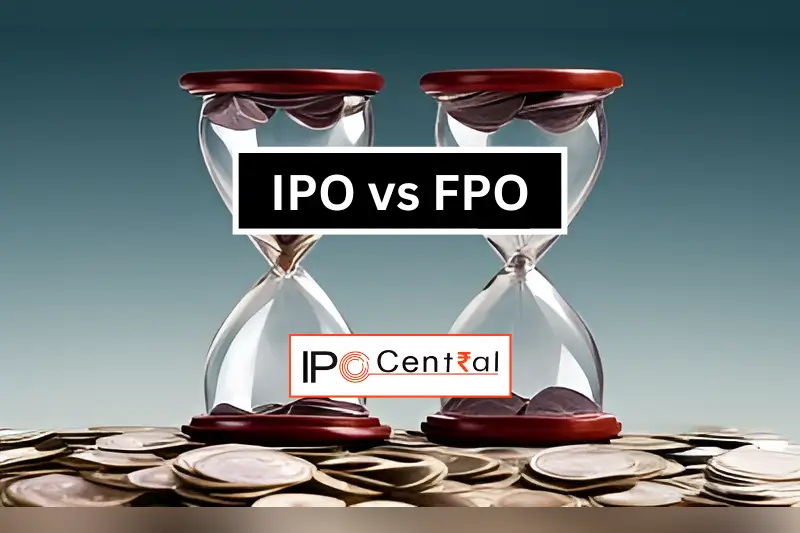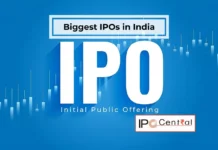In the world of investing, the terms IPO (Initial Public Offering) and FPO (Follow-on Public Offering) often come up, especially when companies raise funds through the stock market. Although they might sound similar, they serve different purposes and are targeted at different stages in a company’s life. Let’s break down what each means, how IPO vs FPO differ, and why understanding them is crucial for investors.

Keep reading to learn more!
Table of Contents
🧾 What is an IPO?
An Initial Public Offering (IPO) is when a private company offers its shares to the public for the first time. This process allows the company to raise capital from external investors and become publicly traded on a stock exchange.
Key Objectives:
- Raise funds for business expansion or debt repayment
- Increase public visibility and credibility
- Provide an exit route for early investors and promoters
Read Also: State-wise IPO in India
Types of IPOs:
- Fixed Price Issue: The price is fixed in advance.
- Book Building Issue: The price is determined based on investor demand within a range.
🔁 What is an FPO?
A Follow-on Public Offering (FPO) occurs when a company that is already listed on the stock exchange issues additional shares to investors. This typically happens to raise more funds or reduce promoter holdings.
Read Also: Difference Between Primary and Secondary Market
Key Objectives:
- Raise fresh capital for expansion, R&D, or paying down debt
- Comply with regulatory requirements for minimum public shareholding
- Improve liquidity and increase the stock’s float
Types of FPOs:
- Dilutive FPO: New shares are issued, increasing total outstanding shares.
- Non-Dilutive FPO: Existing shareholders (usually promoters) sell part of their stake, without creating new shares.
📊 Difference Between FPO and IPO (IPO vs FPO)
Below, we chart the essential difference between IPO and FPO:
| Feature | IPO | FPO |
| Definition | First-time share issue by a private company | Additional share issue by a listed company |
| Company Type | Private Company | Listed Company |
| Purpose | Raise capital, become publicly listed | Raise more funds or reduce stake |
| Risk Level | Higher, due to no trading history | Lower, as company is already public |
| Pricing | Determined via book building or fixed price | Usually market-linked or discounted |
| Investor Confidence | Based on company fundamentals & prospectus | Based on historical performance |
| Examples | Tata Technologies IPO, One Mobikwik IPO | Vodafone Idea FPO, Ruchi Soya FPO |
🧠 Why Should Investors Care?
Understanding the nature of an offering is essential for investors:
- IPO Investing offers early access to growth companies but comes with higher risk.
- FPO Investing can be less risky since performance and financials are already public.
Read Also: All About Non-convertible Debentures (NCDs)
📌 Tip: Always evaluate fundamentals, business model, management, and industry trends before investing in either.
📅 FPO vs IPO – Real-World Context
Recent IPO Example: Mamaearth’s IPO in late 2023 attracted strong interest due to its brand equity and growth story.
Recent FPO Example: Vodafone Idea’s massive INR 18,000 crore FPO in 2024 aimed to ease debt burdens and fund network expansion.
🧑⚖️ Regulatory Overview
In India, SEBI (Securities and Exchange Board of India) governs IPOs and FPOs. Companies must submit a Draft Red Herring Prospectus (DRHP), undergo scrutiny, and get approvals before launch. The entire process is structured to ensure transparency and investor protection.
Read Also: All-time Largest IPOs in India at a Glance
🔍 Common Misconceptions
- Myth: IPOs guarantee quick profits.
✅ Truth: Not all IPOs perform well post-listing. Due diligence is key. - Myth: FPOs always dilute share value.
✅ Truth: Only dilutive FPOs increase share count; non-dilutive ones don’t.
🌐 A Global Glimpse
While the structure is broadly similar worldwide, markets like the U.S. allow for direct listings and SPACs (Special Purpose Acquisition Companies), offering companies more flexible paths to go public.
📌 Final Thoughts
In the key difference between IPO and FPO is related to timing and the former always leads the latter. Similarly, it isn’t much of a question of FPO vs IPO as companies can bring FPO multiple times depending on when funds are required while IPO can be done only once.




































